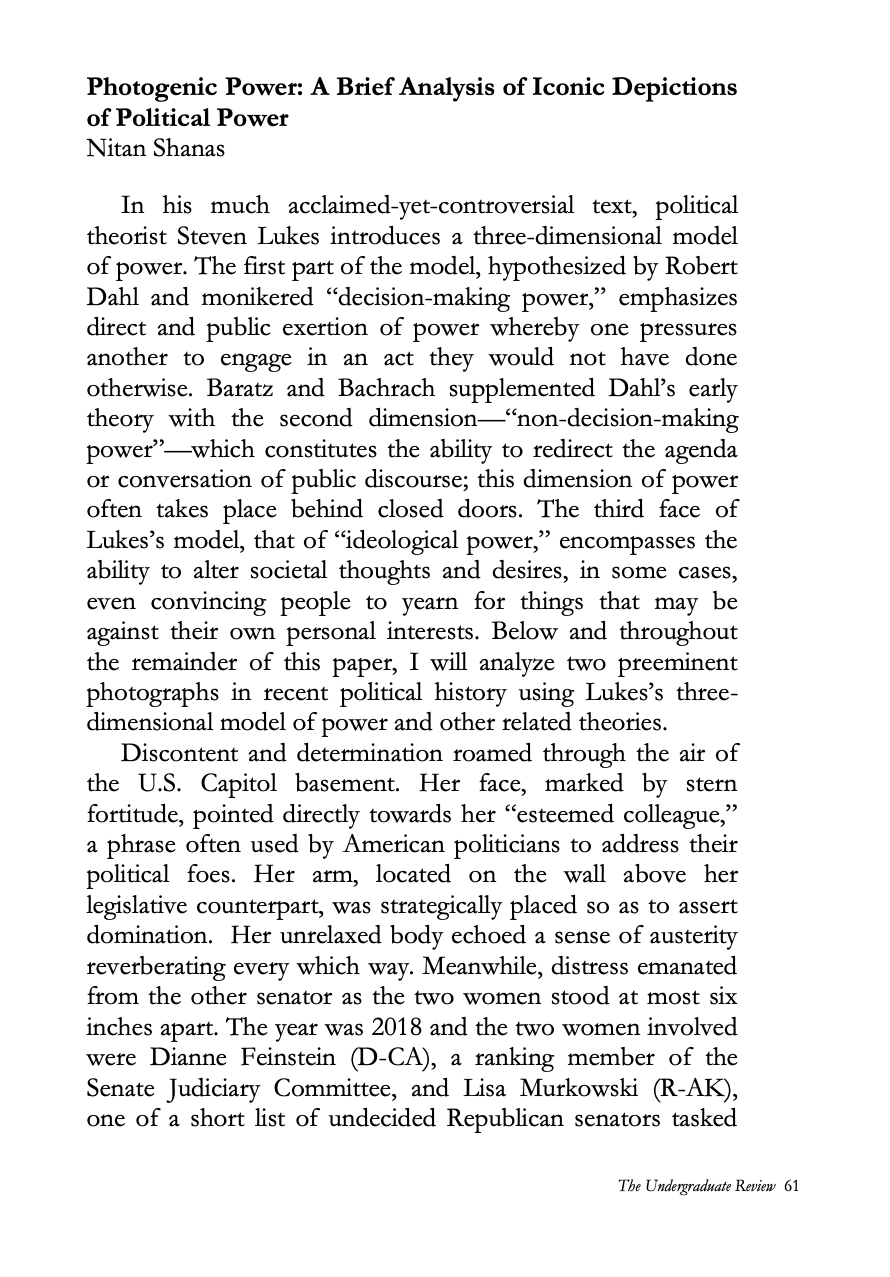Photogenic Power
A Brief Analysis of Iconic Depictions of Political Power
Abstract
In his much acclaimed-yet-controversial text, political theorist Steven Lukes introduces a three-dimensional model of power. The first part of the model, hypothesized by Robert Dahl and monikered “decision-making power,” emphasizes direct and public exertion of power whereby one pressures another to engage in an act they would not have done otherwise. Baratz and Bachrach supplemented Dahl’s early theory with the second dimension—“non-decision-making power”—which constitutes the ability to redirect the agenda or conversation of public discourse; this dimension of power often takes place behind closed doors. The third face of Lukes’s model, that of “ideological power,” encompasses the ability to alter societal thoughts and desires, in some cases, even convincing people to yearn for things that may be against their own personal interests. Below and throughout the remainder of this paper, I will analyze two preeminent photographs in recent political history using Lukes’s three- dimensional model of power and other related theories.



